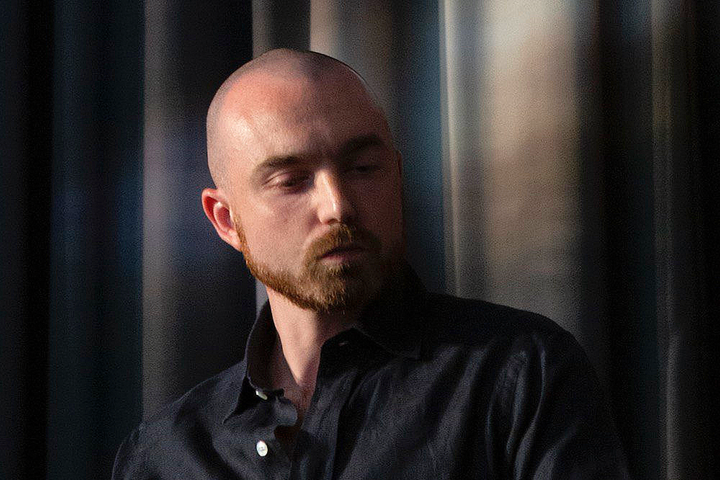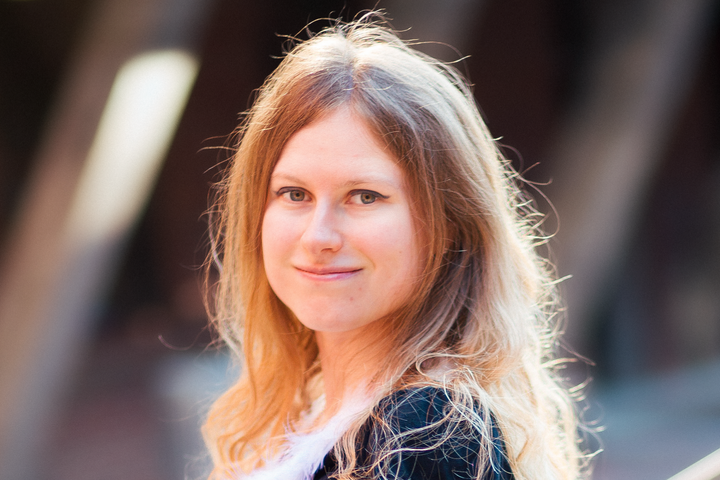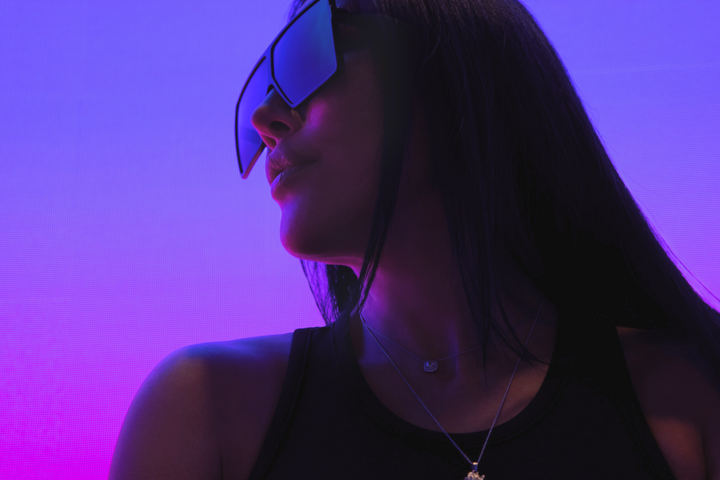Rebecca Edwards, her role with artists and her best advice in working with artists

Rebecca Edwards has been the curator at arebyte Gallery since 2016/17, working across emerging media, new technologies and digital culture. She ran arebyte's project space in Clerkenwell in 2017, which offered one exhibition per fortnight of emerging artists from around the UK , and is currently running hotel generation, a young artist development programme for the gallery.
She also curates the gallery’s physical programme and online platform Arebyte On Screen (AOS). Rebecca’s interests lie in cultivating new curatorial methods across physical and digital space, interweaving fluid approaches to production, dissemination and representation of voices from artists working at the intersection of technology, online culture and new media. She won the NEON Curatorial Award in 2015 and holds an MA in Curating from The Whitechapel Gallery / The Cass.
Can you tell us about arebyte Gallery and your goals with the program?
Each year the art program centers around a specific theme that myself and gallery director Nimrod talk about a year or so in advance. The program always features a mix of UK and international artists, which enables us to contextualize our work internationally and create a dialogue between London and other art scenes.
At its core, arebyte aims to rethink and define what a space for art is or what it should be or could be, and this is still at the core of our agenda. We are a place to exhibit digital art and emerging media, but we’re also a place to meet, to converse, to work, and to think, which is something we hope brings about an openness, or inclusiveness to our program of exhibitions, workshops, and events. We also aim to bring innovative perspectives to art through an interdisciplinary approach at the intersection of new technologies and social sciences.
Working with new media gives us the opportunity to do things regardless of physical space, which opens up more opportunities to experiment curatorially. This has recently manifested in a new online program that we launched in early 2019, arebyte on screen (AOS - aos.arebyte.com). Over the years it has evolved but at its core is an interest in experimental projects utilizing the web and programming in interesting ways.
The peripheral programs to the main gallery program (arebyte on screen and arebyte skills) are such an important part of my thinking as a curator. Any public space or institution has a responsibility to provide other ways to access ideas and concepts put forward by an exhibition program. We see the events, performances, and educational activities as ways to continue and broaden the conversation, to provide spaces for discussion and critique, to enable learning and understanding of new technologies and ways of making, as well as providing uninhibited access to digital arts, and all it encompasses in as many accessible ways we can.
How do you fund yourself?
Currently, we apply for Art Council of England grants and other grants for each exhibition. Sometimes we will co-commission new work with other local or international institutions depending on the scope and ambition of the project. As a charity, we also have artists studios across London which enable us to redirect money into our programs. Having recently been awarded National Portforlio Organization status we will have more stable funding, which we are incredibly excited about!
As a freelance curator, I often work with artists who have received a grant from a specific institution or company.
As a curator who is interested in bridging innovation, new technology, and experiments within art, what are your strategies and has it been challenging in terms of achieving this?
The strategy is one that’s pretty chaotic in the best sense. I try to read as much theory and fiction as I can as a way to have a better understanding of everything related to the digital, but I also try to go to as many exhibitions and events as I can to inform myself of the current trends and new ways of doing things. Having ongoing discussions with artists, curators, and others in the field is also a strategy for bridging different areas of interest. It’s challenging to keep abreast of new developments in technology, new ways of thinking or new experimental approaches to making or curating, especially when there’s so much out there to explore! But I find that keeping active by engaging with social media, news sites and innovative galleries and spaces helps.
Do you have specific tools that you could share in terms of your way of working with artists?
My curatorial approach when working with artists is firstly to be a really good listener. Often artists just want to chat about where they are with a project or idea and receive constructive feedback. Recently I was talking to an artist friend who wanted me to be a sound board for a concern they had over something and in return, I asked for their advice. I thought it was a good way to think about the artist-curator relationship - symbiotic!
Other than that, being present, attentive, and interested, following up and making sure the artist has what they need are priorities.
What are your views on NFTs and what are the pros and cons?
It’s a tricky question because there are so many different facets to NFTs - the new ways of exploring the art market and making generative or iterative work are exciting, but the lack of critique and lack of understanding of how they work (both logistically on the blockchain but also how minting might negatively impact the environment, etc.) from some people who might see them as cash-grabs tends to put many off. Technically, I have no horse in the race; whilst I have a tiny amount of bitcoin and eth, I don’t own any NFTs, nor have I minted anything on the blockchain, so I’m speaking purely from non-experience.
Understanding that there are alternative models out there for the dissemination of work, types of audiences for the work, and the lineage of making and selling is absolutely needed. I love how many artists are adopting this new way of thinking about decentralized systems in the production and circulation of work.
What was the best advice you were given that you could share with younger curators?
Every artist requires a different approach and so it’s not one-size-fits-all when it comes to collaborating on or developing a project together. In these instances you have to be prepared for ideas to change at any time, but also embrace that technology changes too what might have been impossible to do a year ago is now more within reach. We thrive in stressful times and therefore embrace change and unexpected difficulties which keeps us motivated and driven.
The best piece of advice we’ve been given is to take chances, experiment, don’t be afraid to make a mistake, challenge yourself and everyone around you.
Being on top of things is also key, and learning how to plan properly takes time but it’s a lesson worth learning!



